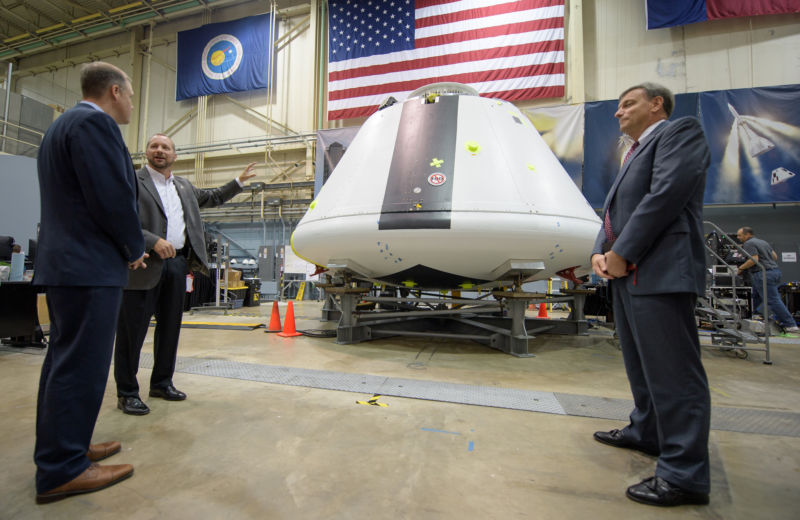How can NASA return to the Moon? By making everything reusable, chief says

Enlarge / On Thursday, NASA Administrator Jim Bridenstine, left, was shown the Orion test crew capsule that will be used for the Ascent Abort-2 test. NASA's Jon Olansen, second from left, speaks as Orion Program Manager Mark Kirasich looks on. (credit: NASA/Bill Ingalls)
One thing new NASA Administrator Jim Bridenstine has shown is that he appreciates space policy history. In his first public speech last May after taking the reins of NASA, when discussing the Trump administration's preference to return to the Moon, Bridenstine cited a number of past human exploration programs proposed by Republican and Democratic presidents that fell by the wayside. "Times have changed," Bridenstine said. "This will not be Lucy and the football again."
This week Bridenstine visited Johnson Space Center for the first time as administrator. On Friday, he will unveil the first astronauts that will fly into space on board the Boeing Starliner and SpaceX Dragon commercial crew vehicles in about a year. As part of the visit, he also answered questions for an hour from a handful of media on Thursday. Ars pressed Bridenstine on why things would be different from past failures to return astronauts to the Moon or go on to Mars.
In short, he believes reusability-from rockets to lunar landers-is the game-changing technology that enables deep-space exploration.
Read 11 remaining paragraphs | Comments